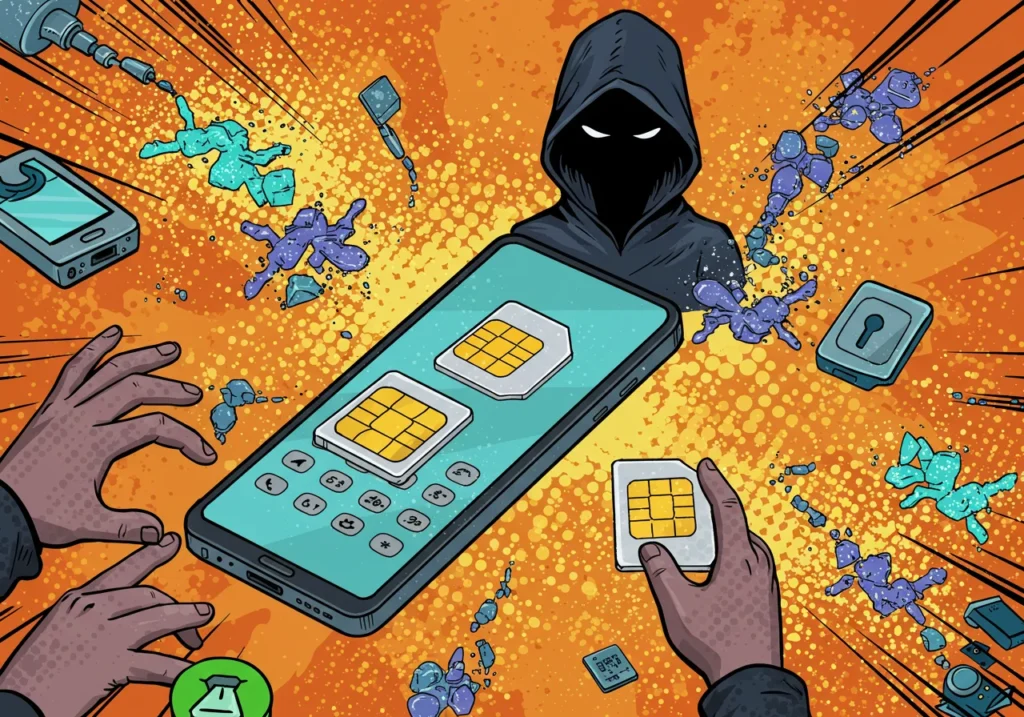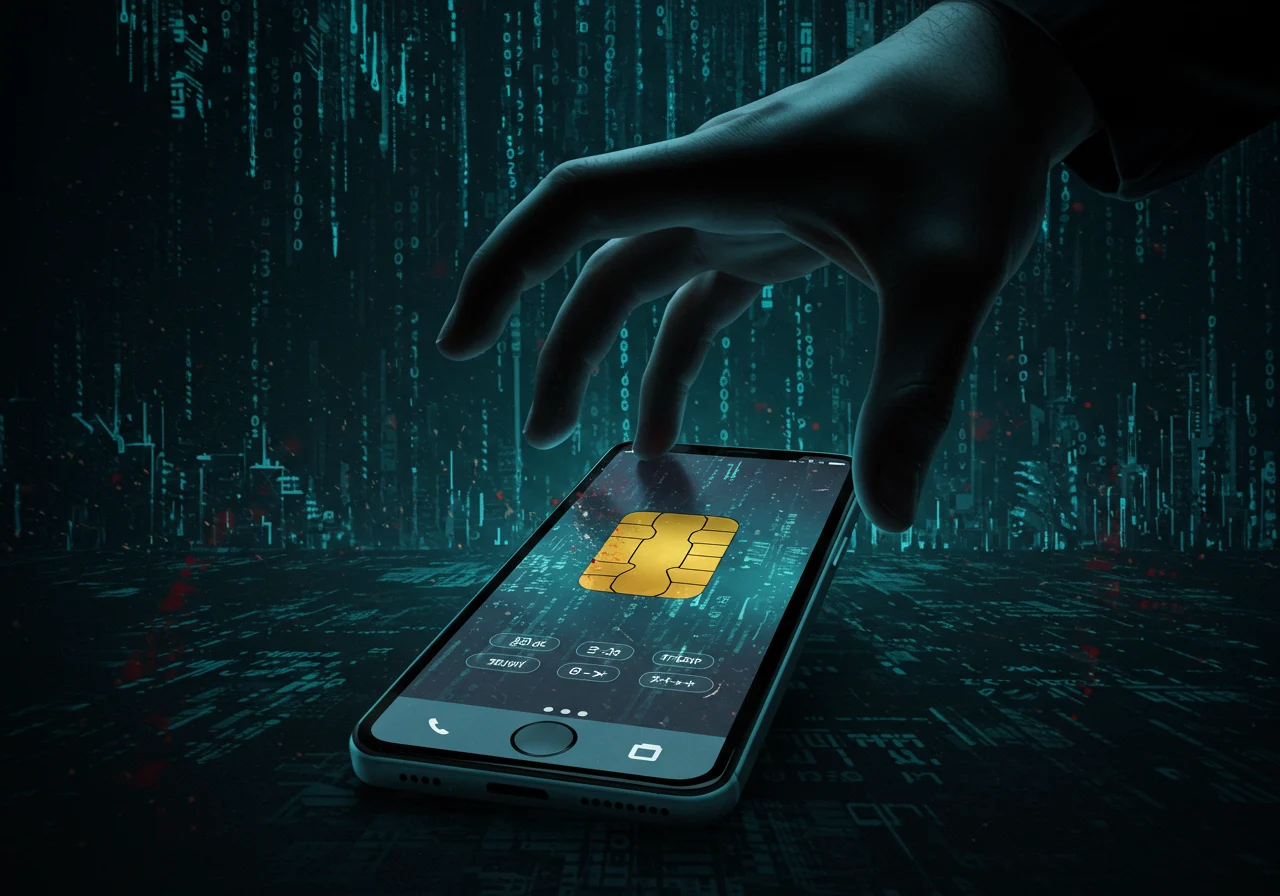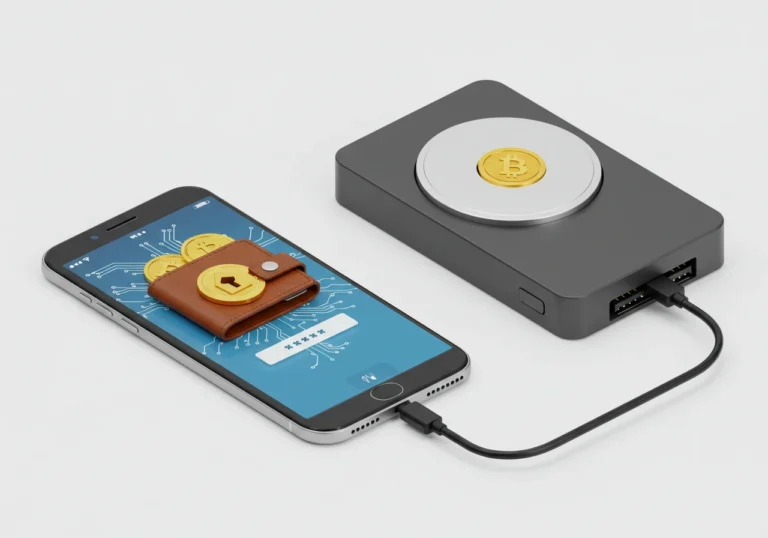How to Protect Your Crypto from SIM Swap Attacks
SIM Swap Attacks are a real threat, but you can take steps to protect yourself. This article walks through practical, simple measures you can use today. Just clear steps you can follow over a cup of tea.
What are SIM Swap Attacks and how do they work?

SIM Swap Attacks happen when someone tricks a phone company into moving your phone number to a SIM card they control. Once they have your number, they can get text messages or calls meant for you. If your accounts use your phone number for password resets or login codes, the attacker can receive those codes and take control.
Attackers use many tricks to get the phone company to act. They might pretend to be you and claim your phone was lost. They might use stolen identity details or bribe an employee. Sometimes attackers combine the SIM swap with phishing or social engineering to get even more access.
This is why avoiding phone number hijacking and following tips for preventing SIM swap attacks matters so much. Your phone number can be a key to your digital life.
Why phone-based verification is risky for crypto
Many crypto services let you use SMS (text messages) as a second layer of protection. That feels safe — a one-time code sent to your phone. But SMS has weak points:
- SMS can be intercepted by someone who controls your phone number.
- Phone carriers sometimes change numbers quickly if they are tricked.
- SMS messages are not encrypted like some app-based codes.
If a bad actor gains your number, SMS codes become a vulnerability. For safeguarding your digital assets, you want stronger methods.
Stronger options: Two-factor authentication for crypto that helps
Use stronger second factors than SMS. Here are safe choices:
- Use an authenticator app (like Microsoft Authenticator, Google Authenticator, or Authy). These apps generate codes on your device and do not use the phone network.
- Use hardware-based keys (USB or NFC devices that store cryptographic keys). These are very secure for logging into important accounts.
- If a service supports security keys (FIDO2 / WebAuthn), use them instead of SMS.
These options reduce the chance that someone with your phone number can break into your accounts. They are core cryptocurrency security best practices for serious protection.
Practical steps to protect yourself — simple and effective
Here are straightforward steps anyone can take right now to reduce the risk of SIM swap attacks.
1. Replace SMS with an authenticator or security key where possible
Go through your crypto exchanges, wallets, and email accounts. Turn off SMS 2FA and switch to an authenticator app or hardware key. It takes a few minutes and blocks the most common SIM attack route.
2. Move recovery and backup methods away from your phone number
Set backup email addresses and recovery codes that do not rely on your mobile number. Keep recovery codes written down in a safe place; treat them like a spare key.
3. Use a strong password manager and unique passwords
If attackers get your email or try password resets, unique, strong passwords stop easy access. A password manager creates and stores long, random passwords for every site.
4. Lock your phone account with your carrier
Call your phone company and ask for a PIN, passphrase, or “port freeze” on your number. Many providers offer an extra layer of identity verification before they will change your SIM. This is a direct step to avoid phone number hijacking.
5. Watch for warning signs and act fast
If your phone suddenly loses signal and you cannot make calls, call your carrier immediately from another phone. Unexplained service loss can mean a SIM swap is in progress.
6. Protect your personal data online
Avoid posting sensitive personal details publicly (like your full name with birthdate, address, or ID numbers). Attackers gather small pieces of information to impersonate you at the carrier.
7. Use separate contact methods for sensitive services
If possible, use a different phone number or a secure email for financial accounts. A dedicated line for banking and crypto reduces exposure.
8. Keep software updated and devices secure
Phones with outdated software are easier to break into. Keep your device patched, use screen locks, and enable device-level encryption where available.
These steps are practical and they work together. Little by little, they build a safety net.
What to do if you suspect a SIM swap is happening

If your phone suddenly stops working or you see strange account activity, move quickly:
- Use another device to log into your key accounts and change passwords.
- Turn off SMS-based 2FA where possible and switch to an authenticator app.
- Call your mobile carrier from a different line and ask them to lock the number or investigate.
- Contact your exchanges and banks immediately and tell them you suspect account takeover.
- Keep records: note times, messages, and whom you spoke with. These notes can help recovery or investigations.
Fast action can reduce losses. Acting calmly is the best first defense.
Extra steps for high-value holders — advanced precautions
If you hold larger amounts of crypto, consider these added protections:
- Use a hardware wallet and keep funds in cold storage when not trading. Cold wallets are not connected to the internet and cannot be accessed via SMS or SIM attacks.
- Set up account-wide security with custodial services that allow institutional-level controls (multisig, withdrawal whitelists).
- Use a secondary phone number with a different carrier for account recovery, or use VoIP numbers only with care — they also have risks.
These measures increase complexity, but they also raise the cost for attackers.
How to talk to your phone carrier — the right approach
When calling your mobile company, be polite but firm. Explain you want extra protections against fraudulent SIM swaps. Ask about:
- Port-out or SIM swap freezes.
- A strong account PIN or passphrase.
- Notifications when SIM changes are requested.
Most carriers will help if you ask clearly. Keeping a record of the conversation helps as well.
Conclusion — small actions, big protection
SIM swap attacks sound worrying, but most people can greatly reduce their risk with a few simple changes. Moving away from SMS codes, using authenticator apps or hardware keys, locking your carrier account, and keeping good habits will protect the vast majority of crypto users. Think of these steps as basic care for your digital wallet — the same way you lock your front door or keep a spare key somewhere safe.
Protecting your money is about preparing a little today so you sleep better tonight. Start with one change: switch off SMS for important accounts and use an authenticator app. That one step stops many attacks in their tracks.
Main takeaways
- SIM Swap Attacks let attackers use your phone number to grab codes and access accounts.
- Replace SMS 2FA with authenticator apps or hardware security keys.
- Follow tips for preventing SIM swap attacks: lock your carrier account, use separate contact methods, and protect personal data.
- Practice cryptocurrency security best practices: hardware wallets, unique passwords, and withdrawal whitelists.
- Watch for warning signs (sudden loss of signal) and act fast: contact your carrier and your exchanges.
- For high-value holdings, consider multisig, cold storage, and advanced custody solutions.
- A small set of habits can prevent major losses and keep your assets safer.
Frequently Asked Questions
Q: Can a SIM swap steal funds from a hardware wallet?
A: Not directly. Hardware wallets keep keys offline. But if an attacker can access an exchange account that uses your phone number, they might move funds on that exchange. Keep exchange accounts secured and use hardware wallets for long-term storage.
Q: Are authenticator apps safe if I lose my phone?
A: Yes — most apps provide recovery codes when you set them up. Store recovery codes offline and secure. Some apps, like Authy, offer multi-device backups; treat backups carefully.
Q: How do I set up a carrier PIN or freeze?
A: Call your provider and request account protections: a PIN/passphrase, or ask them to enable a port freeze. Each carrier has its process — ask them what special protections they offer.
Q: Will changing my phone number stop SIM swap attempts?
A: It can help, but attackers can still target you. The stronger steps are carrier locks, using authenticators, and reducing reliance on your number for recovery.
Q: Should I use a VoIP number (like Google Voice) for recovery?
A: VoIP numbers have different risks and can be portable. They are not a perfect substitute for secure methods. Use them cautiously and combine with other protections.
Table of Contents

Hello, I’m Edmilson Dias, founder of CoinBringer. I created this platform to guide people through the fast-moving world of cryptocurrency with clarity and safety. With years of research in blockchain and digital security, my goal is to translate complex topics into practical knowledge, offering reliable tutorials, safety insights, and guidance for both newcomers and experienced users.
Discover more from CoinBringer
Subscribe to get the latest posts sent to your email.







